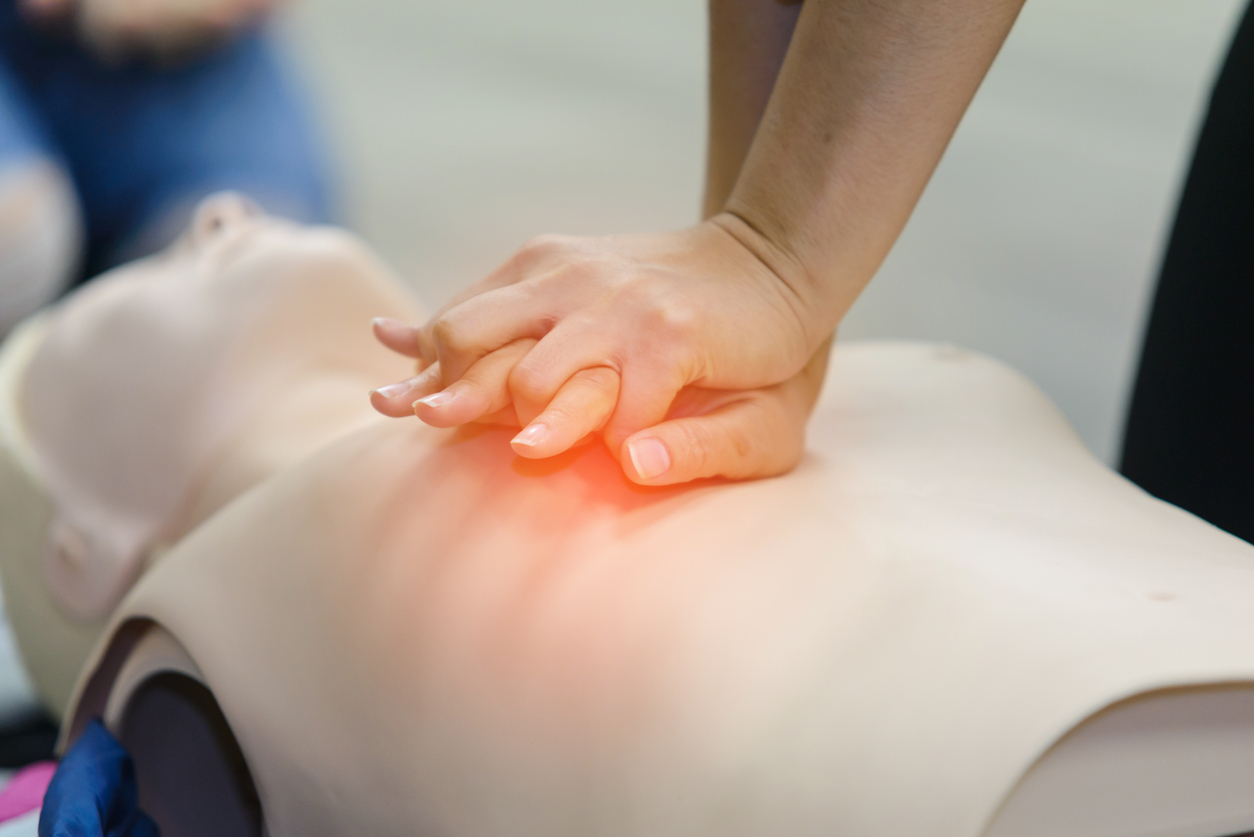
In-person learning is gradually opening up as the COVID-19 vaccine is distributed. In most states, healthcare workers, including those in emergency medical services, are first in line to get their vaccinations. School nurses, nursing educators, and EMS personnel are often certified CPR instructors on top of their other job duties. As such, they are probably looking forward to getting back to teaching CPR to those that want to learn.
Even so, it’s best to implement the most stringent precautions until the coronavirus pandemic is far behind us. Using these guidelines will help prevent the spread of other illnesses, including the common cold and the seasonal flu, as well.
Safely Teaching CPR During COVID-19
- Teach smaller classes. Most localities have guidelines in place about gathering sizes, especially for indoors. Be sure to follow them.
- Each student should have his or her own CPR trainer and/or AED device. Students should have their own CPR mask and one-way valve as well. Face shields are not recommended during rescue breath practice at this time.
- Create a classroom layout that incorporates the proper physical distance between instructors and attendees. A minimum of six feet between attendees should be maintained, and instructors should not have physical contact with students. Correct technique verbally if needed.
- The room should be well-ventilated and well-lit.
- High standards of cleanliness and disinfection are vital. Students and instructors should practice proper hand hygiene; hand sanitizer should be available and accessible; classroom surfaces and equipment should be thoroughly cleaned and disinfected between classes.

- Students and instructors should wear face masks and gloves.
- Students should be screened for illness. Temperatures should be taken before class with a no-contact thermometer. If any student has a temperature or reports shortness of breath and coughing – or any signs of illness – they should be allowed to stay home. Alternate arrangements can be made for teaching them.
- Instructors should avoid any unnecessary travel. Instead, video conference technology can be deployed for teaching and remotely verifying skills competence.
- Remote learning is still a common and viable option for CPR training and certification. The American Health and Safety Institute (HSI) launched a Remote Skills Verification (RSV) option via their platform in April of 2020. The American Heart Association (AHA) is allowing training centers to use “virtual training methods for the cognitive learning and/or skills sessions of [their] healthcare provider-level courses.”
- Students can simulate rescue breaths. Instructors can have students place a CPR mask on their manikins and position the trainers correctly (open the airway, head-tilt, chin-lift), then students can verbalize how they would deliver rescue breaths.
CPR remains an important skill, and hands-on skill practice and evaluation is still necessary for certification. However, instructors and training centers should continue to do their utmost to contain the spread of the coronavirus. Educating students on the facts of COVID-19 and ways to stay safe during the pandemic are as vital as these tips for safely teaching CPR.
“How to Safely Teach CPR during COVID-19,” EMS Safety, May 17, 2020. See the link to the HSI guidelines for TEACHING COVID SAFE
“Infographic: CPR Training with the American Heart Association During COVID-19 Pandemic.”






